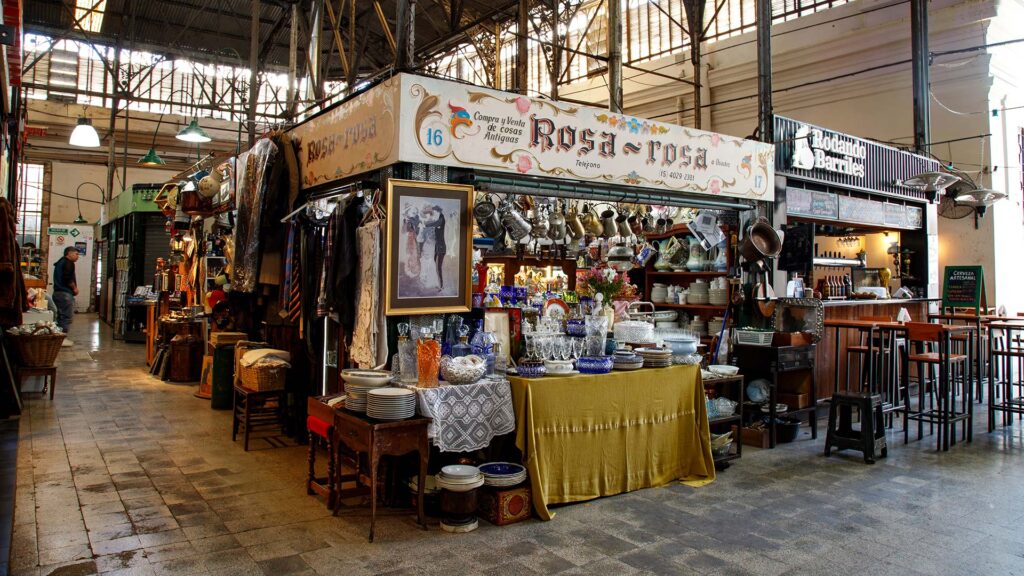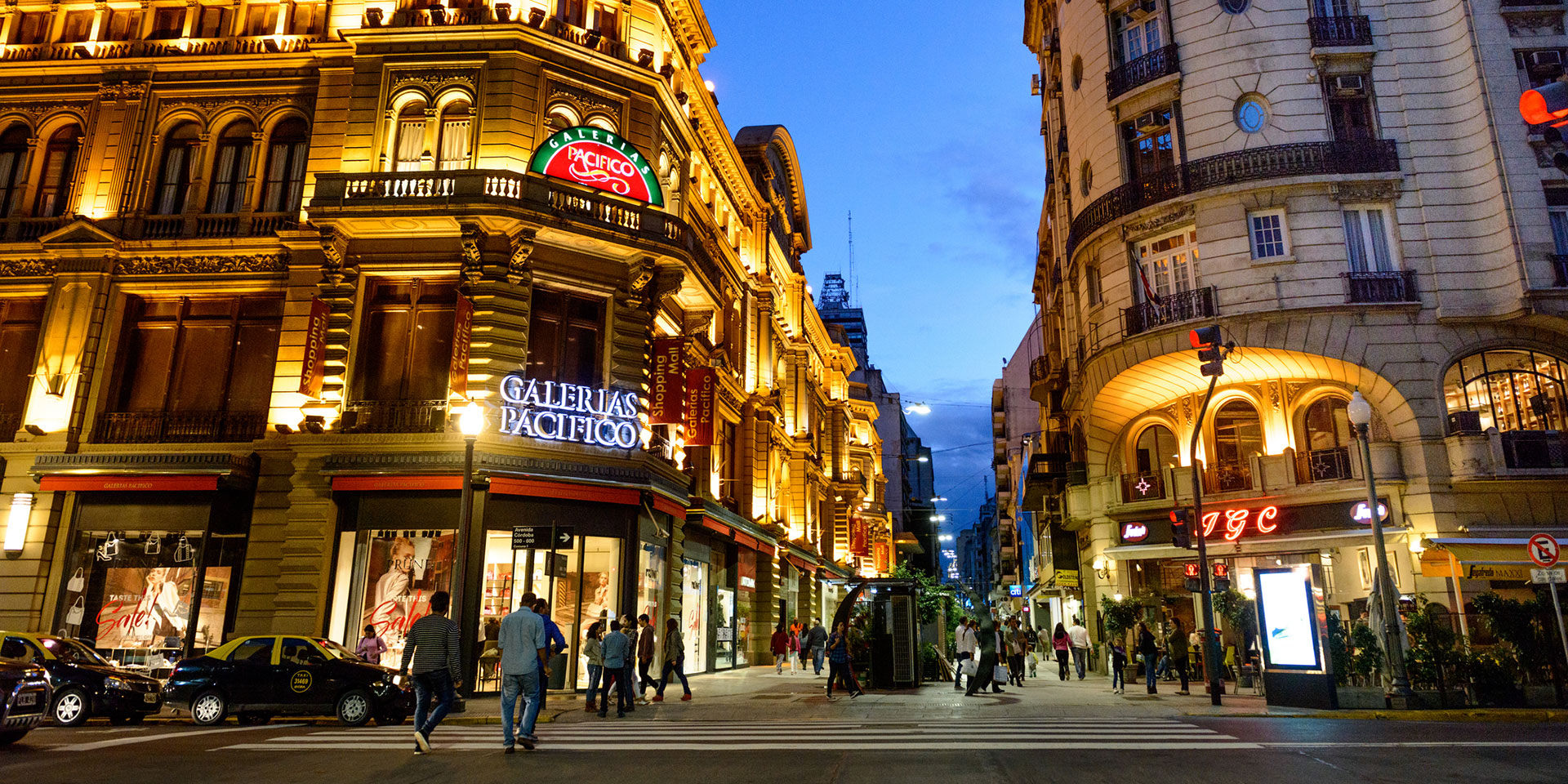Quick Guide
Visit Buenos Aires in the spring or fall shoulder seasons — April to June and September to December, respectively — for mild temperatures and fewer tourists.
Summertime (January and February) in Buenos Aires means throngs of tourists, higher hotel rates and hot, humid weather.
Visas
Travelers need a valid passport to enter Argentina. According to the U.S. Department of State: “U.S. citizens with expired or damaged passports may not be allowed to enter and could be sent back to the United States at their own expense. Private U.S. citizens do not need a visa for visits of up to 90 days for tourism or business. Diplomatic or official passport holders must get visas prior to arrival.”
Money
The official currency is the Argentine peso (ARS). According to the U.S. Department of State, some U.S. citizens report problems using their ATM cards issued by U.S. banks at certain ATMs, and daily withdrawal limits may be lower than in the U.S. Note that many smaller businesses do not accept credits cards, so make sure to carry cash with you. For gratuities, expect to leave at least a 10 percent tip at bars and restaurants.
Travel Health
Before traveling, research and prepare for what to do if you get sick while away.
Getting Here
Fly into Ezeiza Ministro Pistarini International Airport (EZE), 20 miles from the city center. Another airport, located in the city itself, is Jorge Newbery Airport (AEP) known as Aeroparque. It’s within a 25-minute drive of the main hotels, but it serves mainly domestic flights and flights to neighboring countries.
Getting Around
No need to rent a car in Buenos Aires, as plenty of reliable, affordable public transportation is available. Take the subte (subway), the bus, the train or the black-and-yellow metered taxis. You’ll need a SUBE travel card to use the bus or train. Many areas are walkable, and if you like cycling, you’ll find plenty of bike paths to help you navigate the area.
Local Lingo
Make friends with the porteños (friendly residents) who live in the colorful barrios (districts). Speaking of color, don’t miss a visit to Caminito (“little path” in Spanish) — a street museum of brightly colored houses in the port area.
Must-Have Apps
BA Subte; Ecobici; BA Cómo llego; Google Translate
Insider Tip
Night owls will love Buenos Aires — dinner, dancing and nighttime entertainment start much later than in the United States. Expect dinner around 10 p.m., and prepare to start tangoing around (wait for it) 3 a.m.
Visit Buenos Aires in the spring or fall shoulder seasons — April to June and September to December, respectively — for mild temperatures and fewer tourists.
Summertime (January and February) in Buenos Aires means throngs of tourists, higher hotel rates and hot, humid weather.
Visas
Travelers need a valid passport to enter Argentina. According to the U.S. Department of State: “U.S. citizens with expired or damaged passports may not be allowed to enter and could be sent back to the United States at their own expense. Private U.S. citizens do not need a visa for visits of up to 90 days for tourism or business. Diplomatic or official passport holders must get visas prior to arrival.”
Money
The official currency is the Argentine peso (ARS). According to the U.S. Department of State, some U.S. citizens report problems using their ATM cards issued by U.S. banks at certain ATMs, and daily withdrawal limits may be lower than in the U.S. Note that many smaller businesses do not accept credits cards, so make sure to carry cash with you. For gratuities, expect to leave at least a 10 percent tip at bars and restaurants.
Travel Health
Before traveling, research and prepare for what to do if you get sick while away.
Getting Here
Fly into Ezeiza Ministro Pistarini International Airport (EZE), 20 miles from the city center. Another airport, located in the city itself, is Jorge Newbery Airport (AEP) known as Aeroparque. It’s within a 25-minute drive of the main hotels, but it serves mainly domestic flights and flights to neighboring countries.
Getting Around
No need to rent a car in Buenos Aires, as plenty of reliable, affordable public transportation is available. Take the subte (subway), the bus, the train or the black-and-yellow metered taxis. You’ll need a SUBE travel card to use the bus or train. Many areas are walkable, and if you like cycling, you’ll find plenty of bike paths to help you navigate the area.
Local Lingo
Make friends with the porteños (friendly residents) who live in the colorful barrios (districts). Speaking of color, don’t miss a visit to Caminito (“little path” in Spanish) — a street museum of brightly colored houses in the port area.
Must-Have Apps
BA Subte; Ecobici; BA Cómo llego; Google Translate
Insider Tip
Night owls will love Buenos Aires — dinner, dancing and nighttime entertainment start much later than in the United States. Expect dinner around 10 p.m., and prepare to start tangoing around (wait for it) 3 a.m.
Did You Know?
If you’re a soccer fan, catch a game of world-class fútbol in any of the 36 stadiums sprinkled throughout the city and metropolitan area — more than any other city in the world.
Marriott Bonvoy Offers & Promotions
Enjoy exclusive offers on hotels stays and experiences in Buenos Aires
Offers
Where to Stay
Book Over 30 Hotel Brands Around the World










